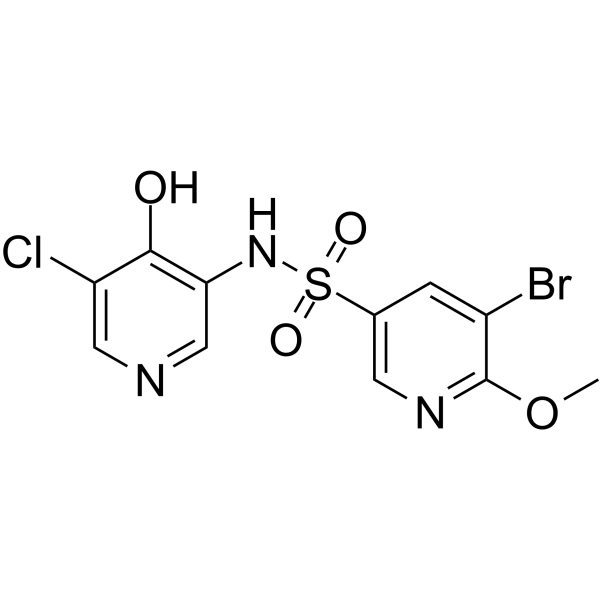ABR-238901
Modify Date: 2025-08-25 13:35:47

ABR-238901 structure
|
Common Name | ABR-238901 | ||
|---|---|---|---|---|
| CAS Number | 1638200-22-2 | Molecular Weight | 394.63 | |
| Density | N/A | Boiling Point | N/A | |
| Molecular Formula | C11H9BrClN3O4S | Melting Point | N/A | |
| MSDS | N/A | Flash Point | N/A | |
Use of ABR-238901ABR-238901 is an orally active and potent S100A8/A9 blocker and inhibits S100A8/A9 interaction with its receptors RAGE (receptor for advanced glycation endproducts) and TLR4 (toll-like receptor 4). ABR-238901 has the potential for myocardial infarction (MI) research[1][2][3]. |
| Name | ABR-238901 |
|---|
| Description | ABR-238901 is an orally active and potent S100A8/A9 blocker and inhibits S100A8/A9 interaction with its receptors RAGE (receptor for advanced glycation endproducts) and TLR4 (toll-like receptor 4). ABR-238901 has the potential for myocardial infarction (MI) research[1][2][3]. |
|---|---|
| Related Catalog | |
| In Vivo | ABR-238901 (30 mg/kg/day; gavage; for 3 weeks) causes less angiogenesis and less IL6 and IL10 in MDSCs[1]. ABR-238901 (30 mg/kg/day; gavage) in combination with Bortezomib (0.6 mg/kg; sc; 2 times/week) reduces tumor load compared with treatments of either agent alone[1]. ABR-238901 (30 mg/kg; IP for the first 3 d and thereafter continuously p.o.; daily; for 21 days) leads to gradual deterioration of cardiac function and accelerated left ventricular remodeling in C57BL/6NRJ mice with myocardial ischemia induced by permanent coronary artery ligation. Treatment with ABR-238901 during the first 3 days post-myocardial infarction (MI) restricts the inflammatory damage and promotes a reparatory environment[2]. Animal Model: C57BL/KaLwRij mice with 5T33MMvv cells[1] Dosage: 30 mg/kg Administration: Gavage; daily; for 3 weeks Result: Caused less angiogenesis.Caused less IL6 and IL10 in myeloid-derived suppressor cells (MDSCs). |
| References |
| Molecular Formula | C11H9BrClN3O4S |
|---|---|
| Molecular Weight | 394.63 |
| Storage condition | -20°C |